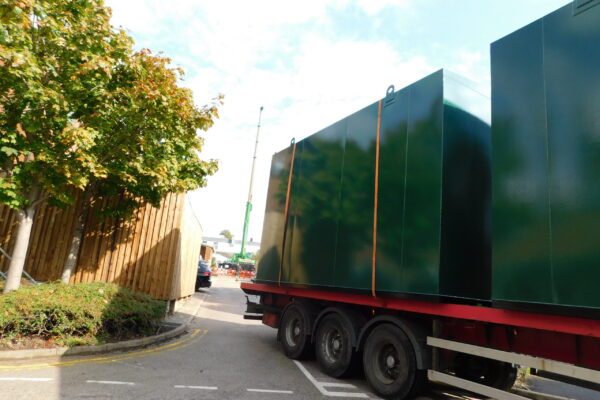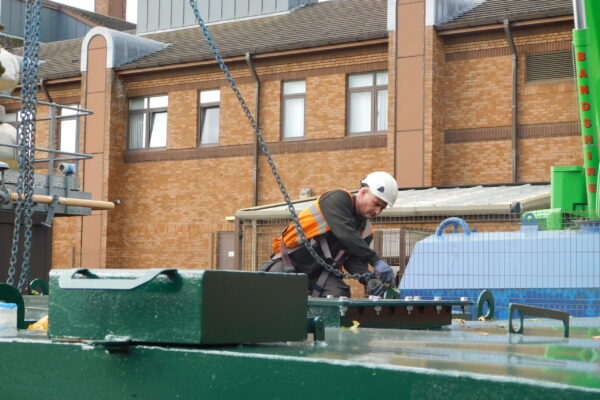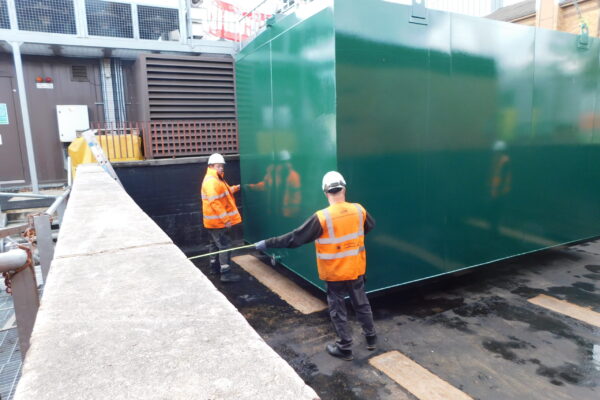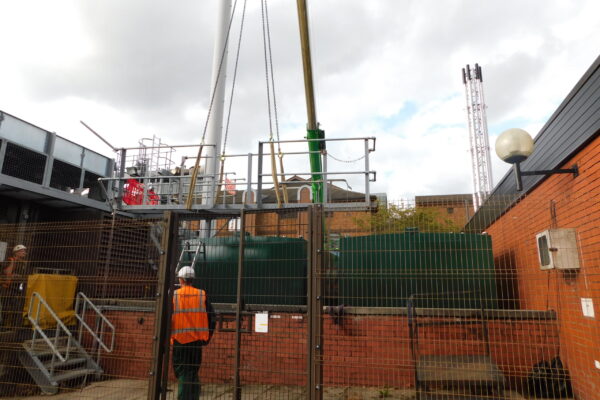The Task
LCM Environmental were called to a hospital site to inspect the condition and subsequently replace two single-skin cylindrical 40,000L bulk fuel tanks with two new self-bunded fuel tanks. We supplied a temporary tank to mitigate the risk should there be a power failure during our work, as the tanks are the sole backup for the generators and boilers on site. The fuel from the redundant tanks was uplifted and partially filtered into the temporary tank then the remainder was transported back to LCM’s headquarters for testing, analysing and storage before delivering into the new tanks on completion.

Scope of Works
The LCM Environmental engineers arrived on site on Day 1 to uplift the red diesel, transfer 10,000L of it to temporary storage and transport the rest of it to our Burnley depot for further analysis and storage. Heavy-duty plastic mats were used on the grass below the temporary tank and helped to prevent ground damage and safeguard against accidental leakage.
The team had to electrically disconnect the system; then thoroughly de-gas, dismantle and man-entry clean the existing two cylindrical 40,000L fuel tanks at the hospital site. The confined space team performed the man-entry cleaning of the fuel storage under their project manager’s supervision and advisement. By the end of the day, the tanks were ready for removal.
The LCM team then started the dismantling of the existing gantry system to allow safe tank removal. This involved the positioning of the crane along with two flatbed HGVs on site; the already electrically disconnected and dismantled tanks were uplifted, placed on top of the flatbeds, and strapped in securely. The old tanks were taken to LCM Environmental’s headquarters for recycling. Upon removal of the old fuel storage tanks, the floor of the existing bund was repaired and sealed ready for the new tank delivery.
The next phase of work began with the arrival of the brand-new bulk fuel tanks. The team, using the crane, offloaded and positioned the new storage vessels in their designated new resting place. Our LCM engineers replaced the existing duplex pump system and re-piped the entire system from the tanks to the pump room. They then placed an additional bund sensor in the pump room, which was then connected to the new bund alarms. If a spillage was to occur, the remote alert would notify the hospital, so they can act quickly and call upon our spill response specialists. The remaining fuel, after being tested in our depot and established to be within specification and fit for use, was returned to the newly installed tanks. Electrical works were done to connect the tank alarms, gauges and pumping equipment, the system was commissioned, and the temporary tank was emptied and removed from the site.
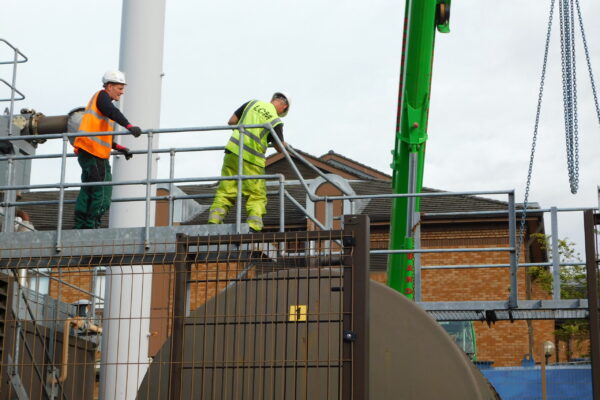
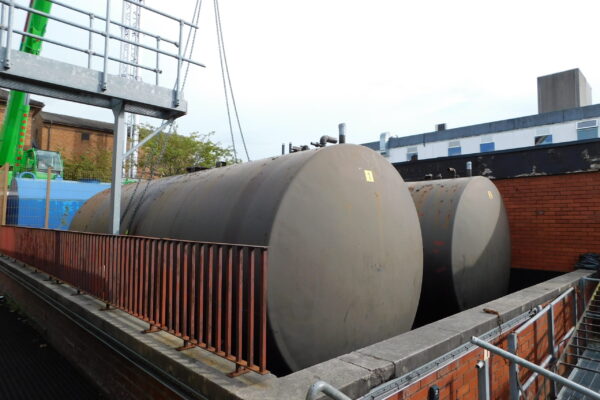
The Outcome
The hospital had its back-up generator and boiler fuel tanks replaced quickly, safely and without fuss. The project went according to plan from start to finish and the LCM Environmental specialists were in and out over a few week programme. Whilst the project was still in the works, we had guaranteed a 24-hour fuel delivery for the temporary storage tank in case of an emergency. We look forward to completing our annual inspections moving forward to ensure the new installation continues to operate safely.
